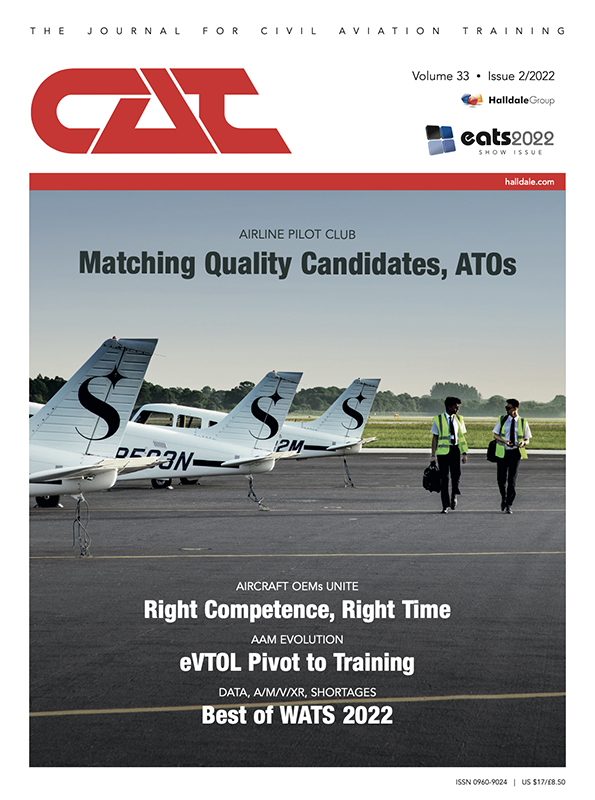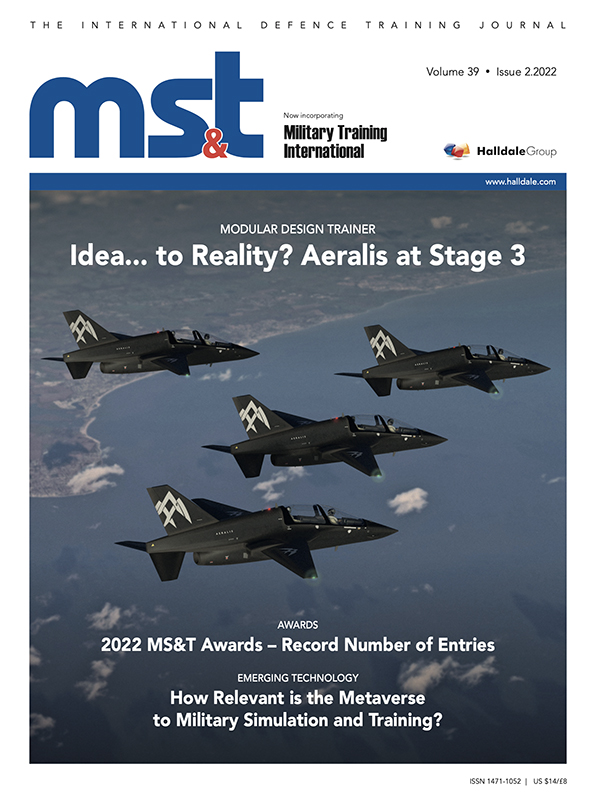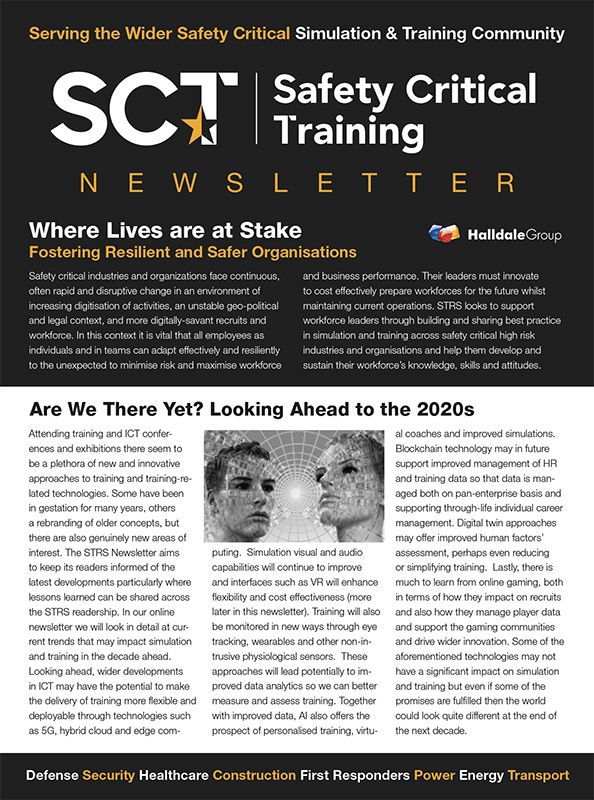This award recognizes innovative products that provide enhanced value to the military client’s education, training or human performance domains. The category includes, but is not limited to, products such as:
· Instructional media,
· Training devices or components thereof,
· Content development tools,
· Analysis and Evaluation tools and methods, and
· Performance support.
The three finalists are:
CAE
Swedish Naval Warfare Training System (NWTS)
The Swedish Navy is not large and needs to maximize availability of its ships for operations rather than training. The onshore Swedish Naval Warfare Training System (NWTS) was formally put into service and declared “ready for training” in 2017, by the Swedish Navy at their Naval Warfare Centre in Karlskrona, Sweden. Significant upgrades beginning in 2019 are adding training capabilities. The Swedish Navy wanted a flexible, cost-effective, low risk system that would deliver individual, crew, and whole ship training to replace their existing systems. NWTS delivers training and education in naval tactics, procedures and doctrine for operations in Anti-Air Warfare (AAW), Anti-Surface Warfare (ASUW), Anti-Submarine Warfare (ASW), Mine Warfare (MW), and Search and Rescue (SAR). The complete NWTS includes 52 Student Stations that are focused on sonar operators (x12), radar operators (x30), and communications operators (x10) plus 13 stations used by instructors for tutoring and exercise control.
The Naval Warfare Training System has had a dramatic and positive effect on all facets of training and education for the Swedish Navy. Prior to implementation of the NWTS, sailors did not receive high-fidelity, simulation-based training in areas such as sonar, radar and communications whilst undergoing basic training at the Naval Warfare Centre. That meant when the sailors graduated, there was still extensive training required before they could advance to operational training on the ships. With the NWTS, the Swedish Navy has been able to condense the basic training syllabus and the sailors are better prepared prior to going to sea.
Cubic
Littoral Combat Ship IVSE
The Immersive Virtual Shipboard Environment (IVSE) supports the U.S. Navy’s Littoral Combat Ship (LCS) program by immersing trainees in a fully operational, 3D replica of the ship, teaching tasks in settings virtually identical to real-life, shipboard scenarios. It has seen dramatic reductions in training course durations. The virtual LCS is “launched” via high-end electronic classrooms, Virtual Reality Labs (VRLs), networked together as a Virtual Ship Training System (VSTS). Each VRL can accommodate up to 24 students engaged in instructor lead or self-paced, individual or team training evolutions.
The LCS IVSE enables the Navy’s objective of “Train to Qualify” (T2Q) and “Train to Certify” (T2C), where T2Q is an individual measure of readiness for a Sailor to “stand the watch”, while T2C is a “watch team” performance metric. In the IVSE, performance-based outcomes for individuals and teams are consistent, standardized and measurable, requiring 100 percent procedural compliance.
Courses have been introduced since 2016, the final course being Deck Operations planned for early summer 2020. Deck Ops enables up to seven multi-player participants, to take part in team training and certification in a virtual, immersive environment – a “first” for the Navy.
The impact is significant, enabling effective and efficient training. For example: Students are graduating the 26-week (designed) Engineering Plant Technician (EPT) course in 15-16 weeks on average and shipboard assessments have validated that many EPT graduates have scored higher in Level of Knowledge interviews than qualified non-EPT course graduates. IVSE training also allows Sailors to stay proficient while off-hull.
Varjo
XR-1 Developer
Varjo XR-1 Developer Edition is an industrial-grade, premium quality mixed reality device with photorealistic visual fidelity, ultra-low latency and integrated eye tracking. It makes it possible to seamlessly merge synthetic content with the real world.
With the visual fidelity in Varjo XR-1, trainees can for the first time read fine text on displays and interact with the smallest buttons, switches and gauges as well as see objectives at realistic visibility ranges inside immersive training environments such as pilot cockpits.
With XR-1, Varjo has demonstrated a chroma keying feature for the first time in real-time mixed reality applications to mask virtual reality content. Trainees can see the real flight controls, instrument panels and their own hands while flying in a photorealistic synthetic environment. The XR-1 used with real-time chroma keying also enables multi-user training scenarios where it is possible to interact with co-pilots or other colleagues. The benefit of XR-1's human-eye resolution are that it counters simulator sickness and pilots, for example, are able to read the text on dials. They are able to see their virtual surroundings just as they would in the real world, including seeing objects at realistic visibility ranges out to the horizon.
The emergence of Varjo's photorealistic mixed reality device XR-1 is bringing major cost savings and portability with the replacement of dome-based visual systems and with built-in eye tracking promises more effective training design and assessment.
The XR-1 is being used by members of the defense community to develop effective and efficient training solutions.
MS&T invites all subscribers to vote for their favorite candidate, limited to one voting session per subscriber each program year. The 2020 Winners as selected by MS&T subscribers will be announced in MS&T’s Awards Issue (3), publishing in mid-August and at https://www.halldale.com/mst-awards-2020.
Click to vote for your choice for winner of each category https://www.surveymonkey.com/r/MSTAwards2020.
Voting ends on Thursday, July 16, at 9pm UTC/5pm EDT.





